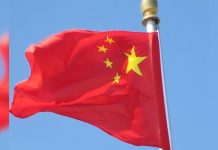Ever since China militarily occupied Tibet in 1951, it has been notorious for exploiting the rich mineral resources of the region with impunity. However, the mineral exploitation and mining activities, which began with small projects in the Tsaidam (Chinese name – Qaidam) Basin in the late 1950s, have increased multifold. The Chinese regime has been recklessly expanding its mining activities in Tibet despite alarming warnings of social and ecological concerns by critics and renowned experts.
China rapidly expanding mineral exploitation and mining activities in occupied Tibet
According to the mouthpiece of the Chinese Communist Party, Global Times, China has increased its investment in mineral resources exploration (exploitation) during the 14th Five-Year Plan period 2021-25 to bolster reserves and production. Last year, China saw an 8% rise in exploration investment, hitting 110.5 billion yuan, leading to growth in reserves of strategic minerals like oil, natural gas, rare earth, and gold.
The report added that Qinghai Province has established 346 gold mining sites, with the largest Dachang Gold Mine located in the Yushu Tibetan Autonomous Prefecture (the Chinese name for the occupied territory of Tibet).
Beijing has been rapidly scaling up and establishing numerous new mines in the so-called Tibetan Autonomous Region, turning several of these mines into some of the largest mineral extraction sites in the world. This expansion overlooks all safety measures and disregards the region’s fragile ecosystem. In 2012, China’s Ministry of Land and Resources selected Gyama Mine as a “pilot of the national green mines project” and a “Model enterprise of national unity and progress”, according to Chinese authorities. They claimed that the mine had the potential to become China’s biggest copper producer within 10 years.
Back then, it claimed that Gyama (Chinese name – Jiama) mine would adhere to higher standards of technology-oriented and corporate responsibility-oriented laws, prioritising policies such as ‘people first’ and ‘safe production,’ while promoting ‘harmony between the mine and the community’ and shouldering the responsibility of social welfare. However, its unchecked expansion resulted in the tragic loss of 83 miners in a landslide a year later. Experts and scholars dedicated to studying the impact of Chinese policy on Tibetan climate and lives asserted that the landslide could have been a “man-made” disaster.
Contrary to China’s claim that the Gyama mine would be a model for “green mine” or “progress”, experts have noted that it has become the symbol of over 200 mining sites across the Tibetan plateau that face similar or even worse socio-economic and environmental problems, requiring urgent attention.
Strikingly, the Gyama Copper Polymetallic Mine, located at Maizhokunggar County in Tibet is owned and operated by Tibet Huatailong Mining Development Company Limited, a subsidiary of China National Gold Group.
Similarly, the Chinese government approved a 36-year assessment period for the ambitious expansion of its Julong (Qulong) Copper Mine into the world’s largest copper mine. It is located in Mozhugongka County, Lhasa in Tibet, and started in 2010. It is one of the largest copper mines globally. However, Zijin Mining Group, which has a majority stake in Julong Copper, plans to transform it into the world’s largest copper mine, increasing annual production to 350,000 tons by the end of 2025 and aiming for 200 million metric tons annually in the long term.
Furthermore, China is operating the biggest chromite mine in Tibet – the Norbusa Mine in the north of Lhuntze. In Tibetan language, Norbusa means ‘Land of Gems’ which is being plundered by the Chinese regime.
Apart from increasing the scale and number of its gold, copper, and other mineral mines, China recently expanded its mineral exploitation around lithium reserves. Till now, China, which is the world’s biggest EV market, has largely relied on other countries for lithium supply. But it recently started exploiting the vast deposits in the Tibetan plateau, which are said to be around 85% of the country’s total lithium reserves. According to a report by Turquoise Roof, a network of Tibetan researchers, this “white gold rush” has led to Chinese miners using “quick, cheap, and dirty” extraction and processing techniques. While China’s claim of using high-standard technology in the Gyama mine proved fatal for 83 miners in 2013, the reports that China is using cheap extraction processes in lithium mines should raise significant alarm.
The Chinese government has been exploiting mineral resources with impunity because it has clamped down on all modes of communication channels. However, lately commercially available satellite images have revealed the extent of danger and threat posed by China’s massive expansion in mining in Tibet.
For China, Tibet is a wasteland that can be redeemed by mining; threats and concerns
Notably, the Tibetan Plateau, which has earned the moniker of ‘Rooftop of the World’, is geologically volatile and vulnerable to earthquakes and landslides.
Critics and renowned subject matter experts have expressed concerns that in recent decades, the Xi Jinping-led CCP regime has intensified its mineral exploitation in the so-called Tibetan Autonomous Region, posing increased threats of instability. This includes heightened natural disaster risks from mining and dam projects in earthquake and landslide-prone mountainous regions. This has also led to health hazards, cultural subjugation of Tibetans, irreparable damage to land use patterns, pollution, severe environmental degradation, and disturbances to the pristine and ecologically sensitive Tibetan plateau.
In one of his books, Australia-based author Gabriel Lafitte explained the massive, uninhibited expansion of mining activities in Tibet and the severe implications for the fragile environment and people of Tibet by highlighting China’s alarming perspective on the Tibetan plateau. Lafitte, a renowned scholar dedicated to researching the impacts of Chinese policies on the region, noted in his book “Spoiling Tibet: China and Resource Nationalism on the Roof of the World,” that “China has persistently described most of Tibet as wasteland, especially the mountains, unless redeemed by mining.”
Several experts have expressed concerns about the safety of miners, noting that China is notorious for blacking out any news that shows it in a bad light. Notably, there have been numerous protests in Tibet regarding health and safety concerns of miners, recurrent accidents, and environmental hazards, but Chinese media has deleted or blocked such news and also didn’t take adequate safety measures to averse such incidences in the future.
Accidents and issues/protests around miners’ safety and forced disappearance, torture get blacked out
On March 29, 2013, the Gyama Copper Polymetallic Mine experienced a tragic landslide that buried 83 miners alive. The incident highlighted the environmental risks of extensive mining and the lack of credibility in Chinese claims of safety and high-standard technology.
The landslide, spanning three kilometers wide and 30 meters deep, occurred while workers slept, raising concerns about the aggressive mining practices and poor environmental regulations in Tibet. The Central Tibetan Administration (CTA) suspected that the landslide was a man-made disaster due to mining activities.
It is important to note that Gyama is also culturally significant for Tibetans, as it is home to sacred temples and traditional agriculture. However, China has been rapidly changing the landscape in the region, making it increasingly uninhabitable. The mines are accused of dumping harmful chemicals, and toxins, polluting the river, and adversely affecting the health of miners.
Another incident that came to light, despite the usual media blackout in Chinese-controlled areas, occurred in May 2023. On 14th May 2023, six workers were reported missing after an accident at the Julong Copper and Polymetallic Mine in the Tibet Autonomous Region. It was reported that contact with the miners was lost when a lift cage fell during construction.
According to experts in the know, some of the criticisms and protests over excessive mining in Tibet had flashed in China on the internet but they were deleted or blocked in no time. These protests are often suppressed before they can begin, and despite stringent curbs, if protesters do gather, the Chinese regime cracks down heavily on them and censors any news about the events. The Tibetan Watch Thematic Report cited some of the major incidents over these concerns in the last decade.
It is pertinent to note that certification and awards for miners’ safety by the Chinese government lack any credibility and are just a farce to hide the extent of the acute crises posed by its aggressive expansion in mining activities in Tibet. Notably, the Gyama Mine, which is still one of the largest active mines in Tibet, was honoured by the local government for its work on safety, despite the 2013 disasters that resulted in the death of 83 workers in a massive landslide.
Furthermore, several experts have expressed concerns that these mines could be China’s strategic move against India apart from the reason of mineral exploitation from its occupied territory.
China’s Sinicisation Project: Cultural and Economic subjugation of Tibetans, slow population replacement
Contrary to the Chinese perspective that views the Tibetan mountains as a wasteland redeemable only through mining, the Tibetan people have a profound spiritual connection to their land. Their nomadic traditions follow the seasons, making their lifestyle sustainable by allowing the land time to replenish. Tibetans consider certain mountains and lakes as the physical homes of Buddhist deities, holding them sacred. They use remote mountains for retreat and meditation, rather than viewing them as wasteland, or cash machines.
China has sought to destroy the Tibetan nomadic way of life by relocating over two million Tibetans from their ancestral lands to barrack-like urban settlements. After being forcibly displaced, nomads face poverty, unemployment, and social exclusion. Once vacated by nomads, Tibetan land and its rich natural resources become open for exploitation by Chinese companies. Many nomads, poorly educated and unable to give informed consent, are persuaded to give up their land rights through deception, threats, and bribery.
This displacement forces Tibetans into debt, making it difficult to feed their livestock or families. Nomads, lacking the skills to make a living in urban settings, are unable to compete with Chinese-literate urban Tibetans or Han Chinese immigrants. Economically marginalized, they often face social exclusion and are blamed for various social problems.
Apart from plundering mineral resources and polluting and disturbing the fragile ecosystem in Tibet, many exiled Tibetans accuse China of repression, torture, and eroding their culture. China is notorious for renaming places with Sinicised names and curbing the use of the Tibetan language, culture, and traditions—actions often referred to as part of China’s Sinicisation Project. U.N. experts have said that around a million Tibetan children have been separated from their families and put through “forced assimilation” at Chinese residential schools.









































